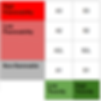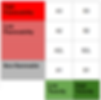Low Pressure Refrigerants
- SkillCat Team
- Sep 15, 2025
- 3 min read
EPA 608 Type 3 Chapter 3 (Take full course)
In this module, we will have a detailed look at Type 3 refrigerants. We will look at their characteristics and their significance.
1. Low-Pressure Refrigerants
Type 3 refrigerants are called low-pressure refrigerants as they are used in low-pressure appliances. Type 3 refrigerants include:

R-11 (CFC)
R-123 (HCFC)
R-1233zd (HFO)
R-245fa (HFC)
Recall that boiling temperature is the temperature at which a liquid changes its state to vapor by boiling. The temperature at which vaporization (boiling) starts to occur for a given pressure is called the saturation temperature or boiling point.
Type 3 refrigerants have a very high boiling point. Recall that the refrigerant boils in the evaporator of an appliance. This boiling temperature is of R-11 when it boils in the evaporator and passes to the compressor is 74.9 °Fahrenheit.
Type 3 refrigerants have a very high boiling point compared to Type 1 and Type 2 refrigerants. The chart shows a comparison of the boiling points of Type 1, Type 2, and Type 3 refrigerants. As you can see, Type 3 refrigerants' boiling points are much higher with a positive sign.
2. Pressure-Temperature Relations
P-T Charts have the relationship between the pressure and saturation temperature of any substance. For any refrigerant, we can know its saturation temperature at a given pressure and vice versa. P-T mean Pressure-Temperature Charts. Let us learn to read these charts.
Consider this P-T Chart for R-123. The units for temperature are either °Fahrenheit or °Celsius, as we can see here. To find the pressure at a temperature, we look for the temperature, then look across that row for the corresponding pressure.
The term ‘vacuum’ in the unit of pressure “inches of Hg vacuum” indicates that the pressure is below atmospheric pressure. Saturation pressure above atmospheric pressure is given in psig. Saturation pressure below atmospheric pressure is given in inches Hg or in psia.

The value 40° Fahrenheit is marked in the chart, and it corresponds to 18.1 inches Hg vacuum. It means that R-123 boils at 40°F when the pressure is 18.1 inches Hg vacuum. Notice that the red pressures are below atmospheric pressure, that is, vacuum pressures and are given in the units ‘inches of Hg.'
In the chart, the value 20 inches (around 19.5) of Hg vacuum is highlighted, and it corresponds to 35 °Fahrenheit. It means R123 will boil at 35° Fahrenheit when the pressure is 20 inches (around 19.5) of Hg vacuum.
Recall that 14.7 psia is atmospheric pressure at sea level and that 14.7 psia = 0 psig. R-123 at a pressure of 14.7 psia (Or 0 psig in the chart) will boil at approximately 82°Fahrenheit. This is the saturation temperature of R-123 at atmospheric pressure.
3. R-123 Refrigerant

R-123 is an HCFC (Hydrochlorofluorocarbon). It contains chlorine, so it contributes to ozone depletion. Recall that chlorine-containing refrigerants deplete the ozone layer.
Recall the ASHRAE safety rating of refrigerants that rates refrigerants based on its toxicity and flammability. R-123 is rated as a B1 refrigerant in the ASHRAE safety category because it has high toxicity.
4. R-1233zd Refrigerant

R-1233zd can be used in place of R-123. R-1233zd is neither a flammable nor a toxic refrigerant. As a result, it carries an A1 ASHRAE safety rating.
Due to its A1 rating, SNAP has approved R-1233zd as a replacement refrigerant for low-pressure systems. Recall that SNAP stands for Significant New Alternatives Policy. It is the EPA’s program to reduce the number and amount of ozone-depleting substances.
R-1233zd is an HFO refrigerant that does not contain chlorine. R-1233zd is used for large-scale applications as it is a safe refrigerant compared to other Type 3 refrigerants. Also, it has a higher efficiency than other Type 3 refrigerants.
5. Conclusion
In this module, we went through the Type 3 refrigerants and their characteristics. We also learned about the pressure-temperature relationship of refrigerants and to read P-T Charts. Finally, we also discussed the properties of a couple of important Type 3 refrigerants.
Other References: